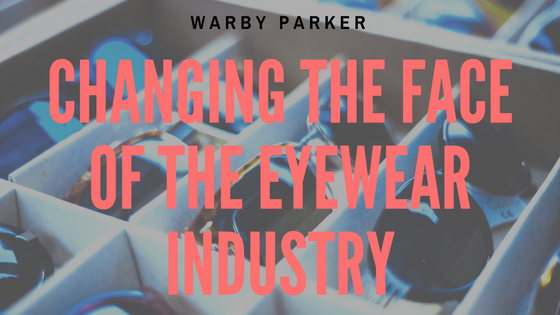Cyber-activism is a powerful factor in the mobilization of social media. When an individual is able to utilize the internet to promote a particular cause or charity without putting in much, if any, physical effort, the message will often grow quickly. Participating in social campaigns, such as a viral messaging game or funny shareable post around a specific cause, will often lead your friends or followers to associate you with that cause. How many times have you seen the Facebook posts about changing your profile photo to a specific color or posting a single word in support of some specific cause? My guess is it has happened often.
Breast Cancer Awareness
Each October, many individuals, businesses, and organizations celebrate National Breast Cancer Awareness Month. This month brings in countless social media campaigns, physical activities to benefit the cause such as 5K walks or runs, and donation campaigns. One social campaign that seems to make the rounds each year is a private message and shareable post asking women to post the location they like to put their handbag with no other info. For example: “I like it on the counter” or “I like it on my desk.”

Source: http://knowyourmeme.com/memes/bra-status-updates
Do social campaigns like this really benefit a cause? Some argue that this vague style of posting does little to raise awareness of breast cancer, especially where it specifically excludes men who can also be affected by the disease. In fact, over 2000 men were diagnosed and over 400 men died of breast cancer in the United States in 2012. You would think that raising awareness around the fact that they can also be diagnosed with this cancer would be a big part of an awareness campaign. It is also difficult to attribute success in funds or awareness specifically back to these passive forms of activism. Many of these campaigns go live at the beginning of Breast Cancer Awareness Month and with all of the other activities surrounding the cause, it can be difficult to know what is working and what is not. While it may not be quantifiable, there is no doubt that these social memes go viral and I don’t think they will stop anytime soon.
This does not mean that there are no examples of quantifiable results from a social campaign focused on a cause or charity. A great example of a successful viral campaign is the ALS Ice Bucket Challenge.
Getting Cold for a Cause

ALS is a progressive neurodegenerative disease that affects nerve cells in the brain and spinal cord. Prior to the campaign in 2014, this disease was not top of mind for many individuals even though many are affected by it each year. According to the ALS Association, roughly 6,000 people in the U.S. are diagnosed with ALS each year – that equates to 15 new cases a day. So how do you really increase donations and awareness on a disease like this when it isn’t as “mainstream” as other great causes?
Social Media Mania
I don’t know about you but when the ALS ice bucket challenge first launched I was seeing it everywhere on my social media platforms. I personally know a few people whose families are affected by this degenerative disease, which instantly made me want to participate and support the cause. A main reason why this campaign was so successful is the real-life stories connected to it. By showcasing individuals who were suffering from ALS or family members participating in support of someone they love with the disease, everyone could feel the emotion and connect to it on a personal basis. Celebrities also helped push this campaign further into the spotlight. Stars from Justin Bieber to Adam Levine to Ellen DeGeneres to Sir Patrick Stewart all dumped buckets of ice water on their heads and challenged other celebrities to do the same. The point of the campaign was to donate money or dump a bucket of freezing cold ice-water on your head – and at the end you were to challenge 3 of your friends to do the same within a 24-hour period. The time limit added a sense of urgency and really encouraged participation quickly. This campaign spread like wildfire and before you knew it millions of people were donating, participating, or both – all to raise awareness and bring more funds to find a cure.

The Results
We know that the participatory nature of the campaign, the celebrity endorsers, the time urgency, and the real-life stories of families affected by the disease contributed to the overall success of the campaign. But how successful did it end up being in the end?
Well, according to the ALS Association, a few highlights are:
- $115 Million in donations received during an 8-week period in 2014
- $89 Million dedicated to research to advance the search for a cure and treatment
- 100% increase in funds received by ALS Certified Treatment Centers of Excellence to enhance patient care
- 200+ research projects funded by the ALS Association since the challenge
- And so much more…
You can check out their infographic to see all of the other amazing things this challenge did to help find a cure.
You be the Judge
So there you have it. Two different campaigns. Two different causes. Two different sets of data. Do I think the breast cancer awareness shareable campaigns are beneficial? Maybe. Do I think they are worth participating in if you feel you are doing good in the world and helping to spread awareness? Sure. Who’s to say that these campaigns don’t spur donations from those who participate or from those who learn about the background to a strange post such as, “I like it on the kitchen table.” All things promoting good causes are worth sharing, in my opinion. The ALS Ice Bucket Challenge just happens to be one we can quantify. It was not tied to another event or campaign that could skew the data. They have seen a huge increase in funds both from the challenge itself and from those who saw the success and decided to contribute to the cause after the fact. Social media campaigns around a cause are a great way to participate in cyber-activism and, ultimately, can lead to more engagement, awareness, funds, and support to a cause that is near and dear to your heart.
Resources:
Mahoney, L. and Tang, T. (2017). Strategic social media. Chichester, West Sussex: Wiley Blackwell.







